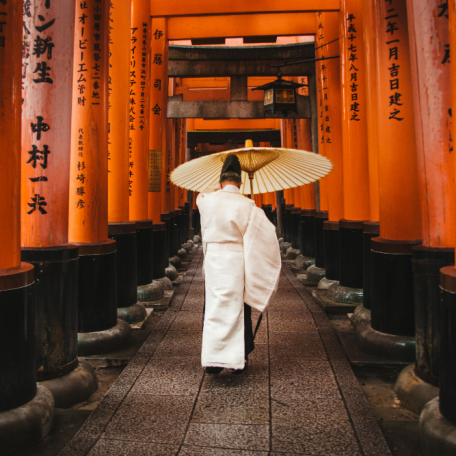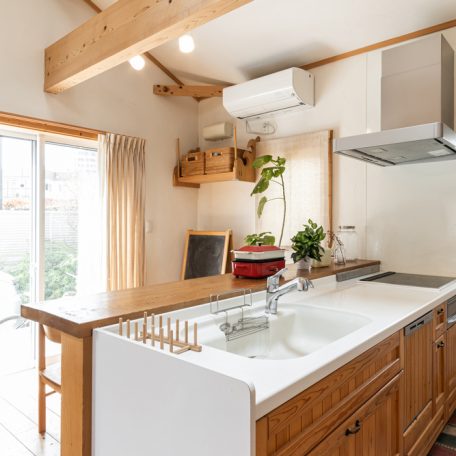‘Tis The Season To Eat Nabe
Dec 14, 2019
BY Michelle Lam

As chilly winter hits and the temperature drops below zero, fellow visitors to Japan are probably wondering where to get a nice hot meal – and what to choose for the optimal flavor + warming factor…well, look no further! Nabe is a traditional hot pot dish enjoyed by many Japanese people all during the winter months.
There are many variations of nabe, but the essential ingredients are a pitcher full of dashi (a kind of traditional savory broth), vegetables and chicken/pork meat, and any additional spices or flavorings to suit your taste.
The dish is cooked right at the table on top of a portable gas stove so that it stays hot and steamy, best served with a cold beer and your legs under the kotatsu (heated underside of the table). For first-timers, knowing which nabe utensils are used for what purpose might be helpful. Firstly, there is the pot in which you cook the dish, literally called ‘Nabe’. To help you scoop out the broth, there are two types of ‘Renge’ (ladles) – a normal one and one with holes.
The holes are for ladling tricky ingredients such as tofu, which often are too hard to pick up with chopsticks. Then there is the ‘Aku-gire’, a jar-like container used for collecting the froth and disposing of any bones or shells. Last but not least are the chopsticks and the serving bowls. The serving bowls are pear-shaped, with one side narrower than the other. The narrow end makes sliding in the hot ingredients during serving easier, and prevents you from being scalded.

As mentioned before, there are many different styles and types of nabe. For those who are into the quirks of Japanese culture, Chankonabe is sure to fill your stomach. This type of nabe was traditionally eaten by sumo wrestlers in order to gain weight – but don’t worry, you don’t have to eat it every day like they did.
Chankonabe is high in protein, consisting of chicken, pork, and seafood alongside the occasional udon noodles and vegetables included. You can spot Chankonabe easily just by the sheer amount of ingredients in the pot, which is great if you have a bottomless stomach like me.

Speaking of bottomless stomachs, the ‘Thousand Leaves nabe’ or ‘Mille Feuille nabe’ is a special kind of nabe with its ingredients tightly packed together to look like mille-feuille pastry. The vegetables and strips of meat are layered against each other in a circular fashion – hence the name ‘Thousand Leaves.’ Because the ingredients are so tightly packed, this type of nabe doesn’t start off with the dashi in the pot. Instead, you have to pour the dashi over the ingredients.

Another type of nabe is Yosenabe, the perfect type for your indecisive friend. ‘Yose’ means ‘to gather,’ so Yosenabe consists of a little bit of everything – seafood, chicken, pork, beef, tofu, mushrooms, bokchoi… you name it, Yosenabe has it. The volume of ingredients isn’t as high as Chankonabe, but the variety is definitely more colorful.
Ingredients will change depending on each region’s specialty. For example, Yosenabe in Kyoto will contain strips of tofu (a Kyoto specialty) whilst Fukuoka’s variation will most likely contain animal innards (but that’s for later). I highly recommend trying Yosenabe as a first-time taste tester.

Now, for the daring adventurers – Motsu nabe is a specialty of Fukuoka that serves animal innards as its main ingredient. Many foreigners hesitate to eat cow or pig intestines because it isn’t in our natural diet, but in Asia, eating animal innards is very common – in fact, Japan has been eating offal since the 7th century.
Offal is extremely popular due to its cheap price and high amount of collagen – the secret to smooth skin. In Motsu nabe, the cooked animal innards have a soft, chewy texture and melt in your mouth. If you’re up for a challenge, definitely try Motsu nabe – the prize is worth it.

For ballers on a budget, there are various cheaper chain stores that sell nabe with modern variations on the dashi. Akakara, for example, serves spicy nabe for an affordable price of 990 yen per person. It also offers spicy cheese nabe (trust me, it tastes divine) and kimchi nabe for those who want to stay warm throughout winter.
This is also a dish you can cook when you return back home! Most ingredients are easy to find at local supermarkets around the world. What better way to pass the cold winter than to share this delicious meal with your friends and remember your trip to Japan?
PIN THIS FOR LATER
If you’d like to try a special Nabe made with premium sake, be sure to join our Sake Town tour in Hiroshima.
Book your pocket wifi now to stay connected through your entire Japan Journey!

Be sure to get the JR Pass to make navigating Japan during your trip that much easier!

YOU MIGHT ALSO LIKE





